Location
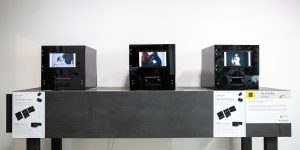
PSEUDOREALITY ALTERNATIVES
Cheung Kong School of Art and Design – Digital Media Art Department, Shantou University
Worldwide human society is moving from the digital to hyper digital age where virtuality is becoming as important as reality. Interpersonal communication is largely happening within a pseudo-real social landscape recently enriched with new artificial intelligence. However, we still find it confusing to navigate our existing social environment and understand each other clearly on different levels such as cultural, emotional, intellectual, and interpersonal. Through the works exhibited by Cheung Kong School of Art and Design, students are trying to communicate ideas of multiple understandings and misunderstandings, subtle and alternative meanings, and how that can affect our social and emotional realities. As artists and descendants of the Bauhaus, we recognize that our role is changing. We no longer believe in the heroic genius of the master who forms the world in a state of intuition. Embedding and feedback reveal that responsible action requires diverse cognitive variations that involve the counterpart in a performative way.
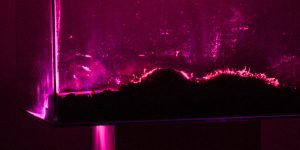
HKU Showcase
HKU University of the Arts Utrecht
HKU Showcase is a mini showcase of upcoming talents from the HKU University of the Arts Utrecht. The focus for this showcase is on three diverse works in the field of “playful intervention.” The HKU Expertise Centre for Creative Technology has curated this mini showcase.
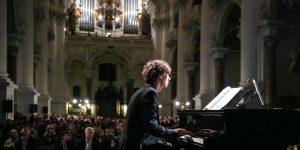
Dear Glenn, – Yamaha AI Project
Pianist: Francesco Tristano (LU), Flutist: Norbert Trawöger (AT), Violinist: Maria Elisabeth Köstler (AT/DE), Researcher: Akira Maezawa (JP; Yamaha Corporation)
Yamaha Corporation, together with the support of the Glenn Gould Foundation and pianists, is pursuing the development of the world’s first AI piano solution capable of analyzing and playing in the style of a human pianist while interacting with human musicians in a music ensemble. Yamaha will demonstrate the AI through a concert performance at the St. Florian monastery on September 7.

Generative agents
Jérôme Nika (FR)
Computer music designer, researcher, and musician, Jérôme Nika (FR) develops his own software instruments in collaboration with Ircam, and in interaction with expert improvisers and composers.
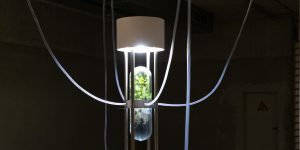
Earthlink
Saša Spačal (SI)
Earthlink performs a planetary biogeochemical feedback loop catalyzed by microbial metabolism. Through the intimate process of breathing, humans are bound to the planet, immersed in an intra-flux of exchanges and negotiating relationships. What happens when the connections become technologically mediated? How will we breathe? Who or what will dispense the dose? Who will survive? How will we grieve?

Trans*Plant: connecting with mycorrhiza intranet [edible version]
Q.R*3 – Quimera Rosa (ES/AR/FR) + Roger Rabbitch (ES) + Rebeca Paz (ES)
“2024. March 8. The annual resources of the Earth have been exhausted. The equivalent of 4 planets is needed to satisfy human consumption. From a VPN of a second Internet, a group of biohackers, Q.R*3, tries to connect with the mycorrhiza, a network composed of a symbiosis between roots and fungi through which the terrestrial plant world communicates. The first members of this group died immediately under the effect of an unknown molecule. Nothing is known about the rest of the group.”
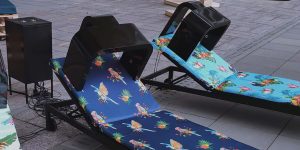
I am {Emotion}
Manolis Perrakis (LE) in collaboration with Mathis Antony (CH)
The installation is comprised by a sun lounger bed that the audience can lie on, and receive real-time “psychological” advice. GPT2 in conjunction with tacotron2 and an emotion classification algorithm is used to extract the emotion from the participant’s face and vocalize it into an endless stream of artificial wisdom.
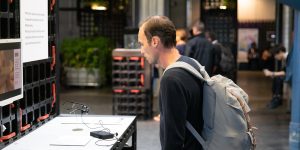
xDiversity Project
Yoichi Ochiai (JP), JST CREST xDiversity Project Colleagues (JP)
This project aims to explore AI-assisted human-machine integration techniques for overcoming impairments and disabilities. The final goal is a social design and deployment of the assistive technologies towards an inclusive society.
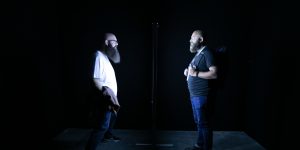
100 Jahre Bauhaus: We are not alone / Shared Habitats
We are not alone consoles and warns us: it promises an answer from the ecosphere – animals, plants, cosmos, which speak to us in an old-fashioned way – just as it reminds us that we still do not understand enough of this ecosphere, just as we overlook many other humans who do not live in our culture, our sphere of life, or our social class. And it reminds us that the world does not end with the Earth or even our own limited field of vision. At the same time, the title points out that our technologies are not passive tools that we use with our hands. Rather, they have mutated into co-creative teammates who make predictions, take decisions, and not only generate their own suggestions for action but also implement them. We are not alone! As artists and descendants of the Bauhaus, we recognize that our role is changing. We no longer believe in the heroic genius of the master who forms the world in a state of intuition. Embedding and feedback reveal that responsible action requires diverse cognitive variations that involve the counterpart in a performative way.
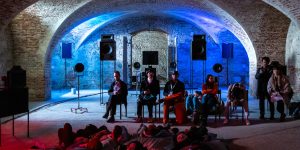
The Vienna Acousmonium
Thomas Gorbach (AT)
Acousmatics (acousma in Greek means “aural cognition“) is the cognitive science of listening; a listening to listening. To make this possible, unheard sounds and compositions are projected through an orchestra of loudspeakers: the Acousmonium.


